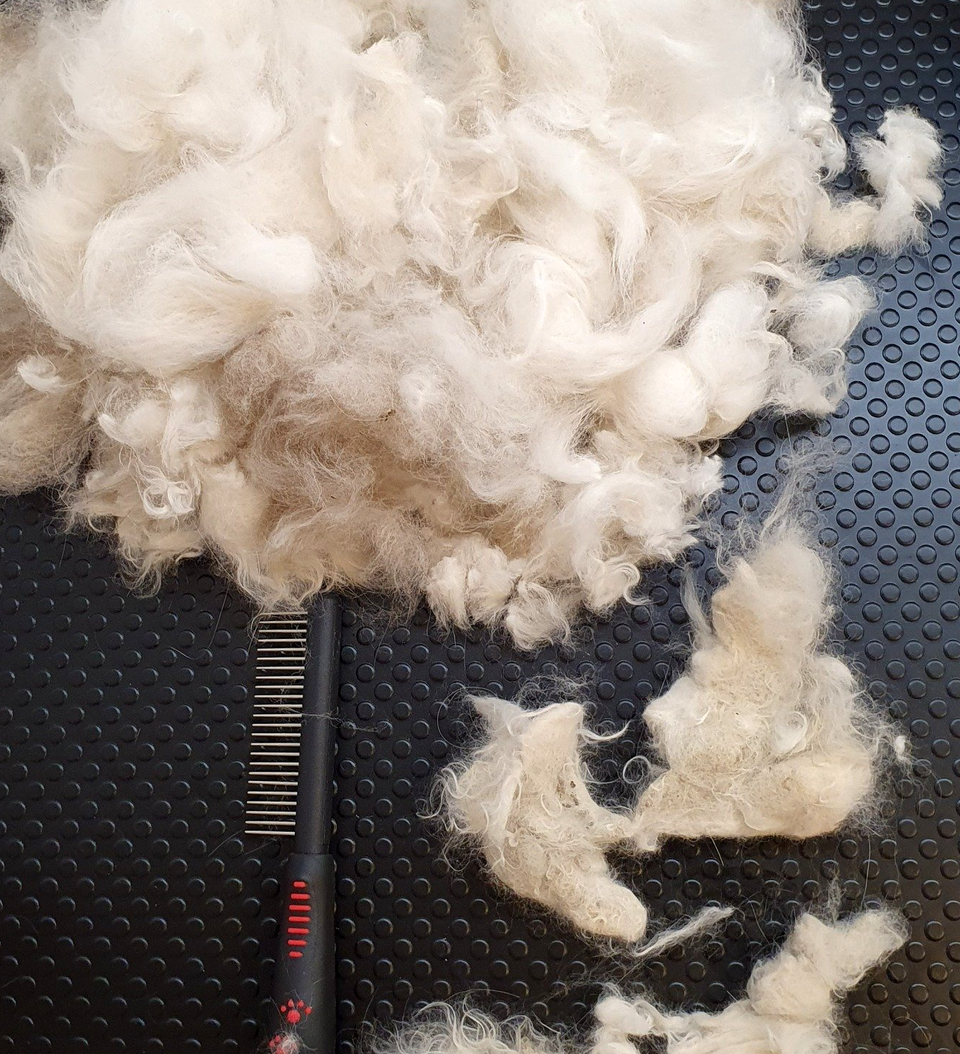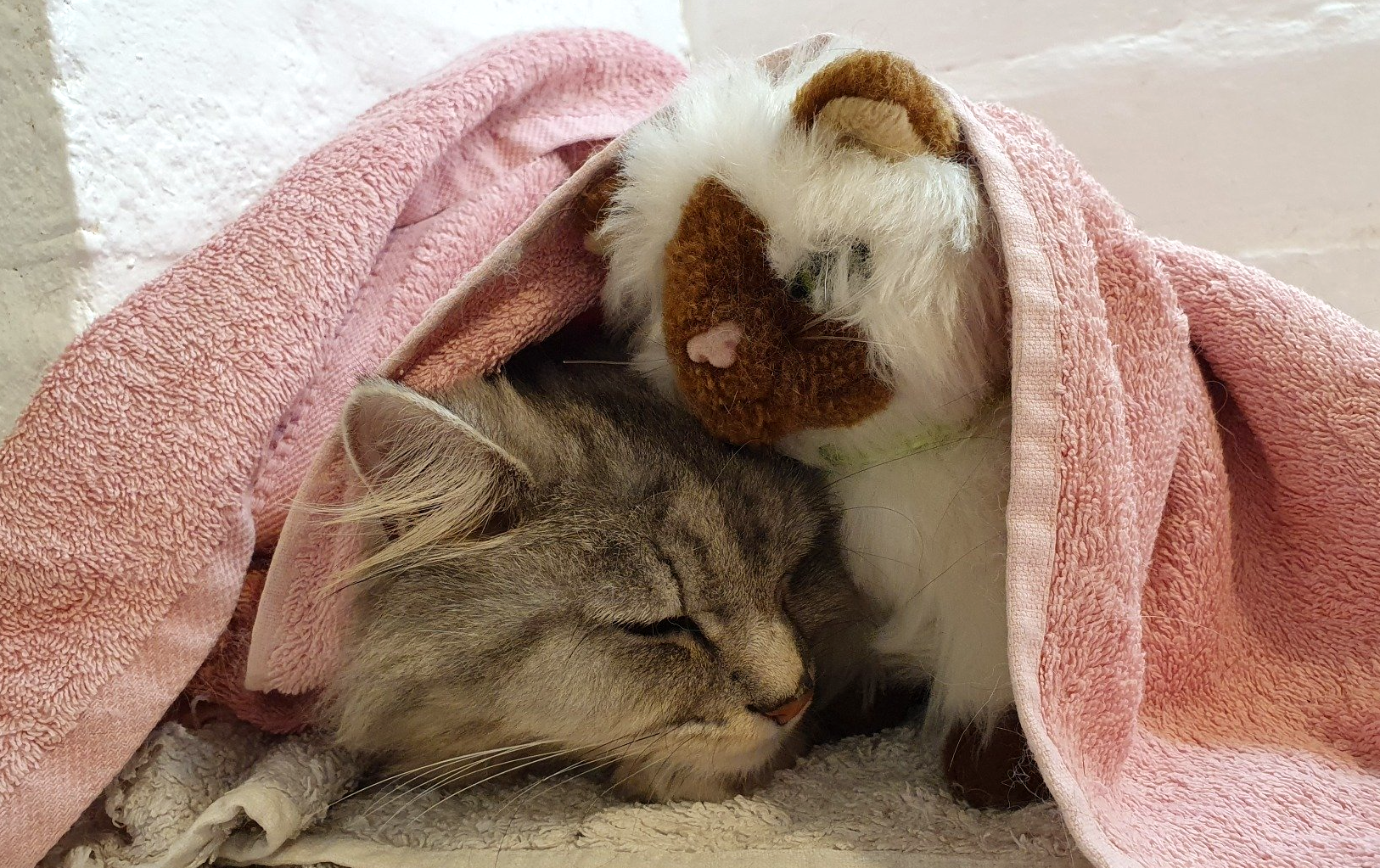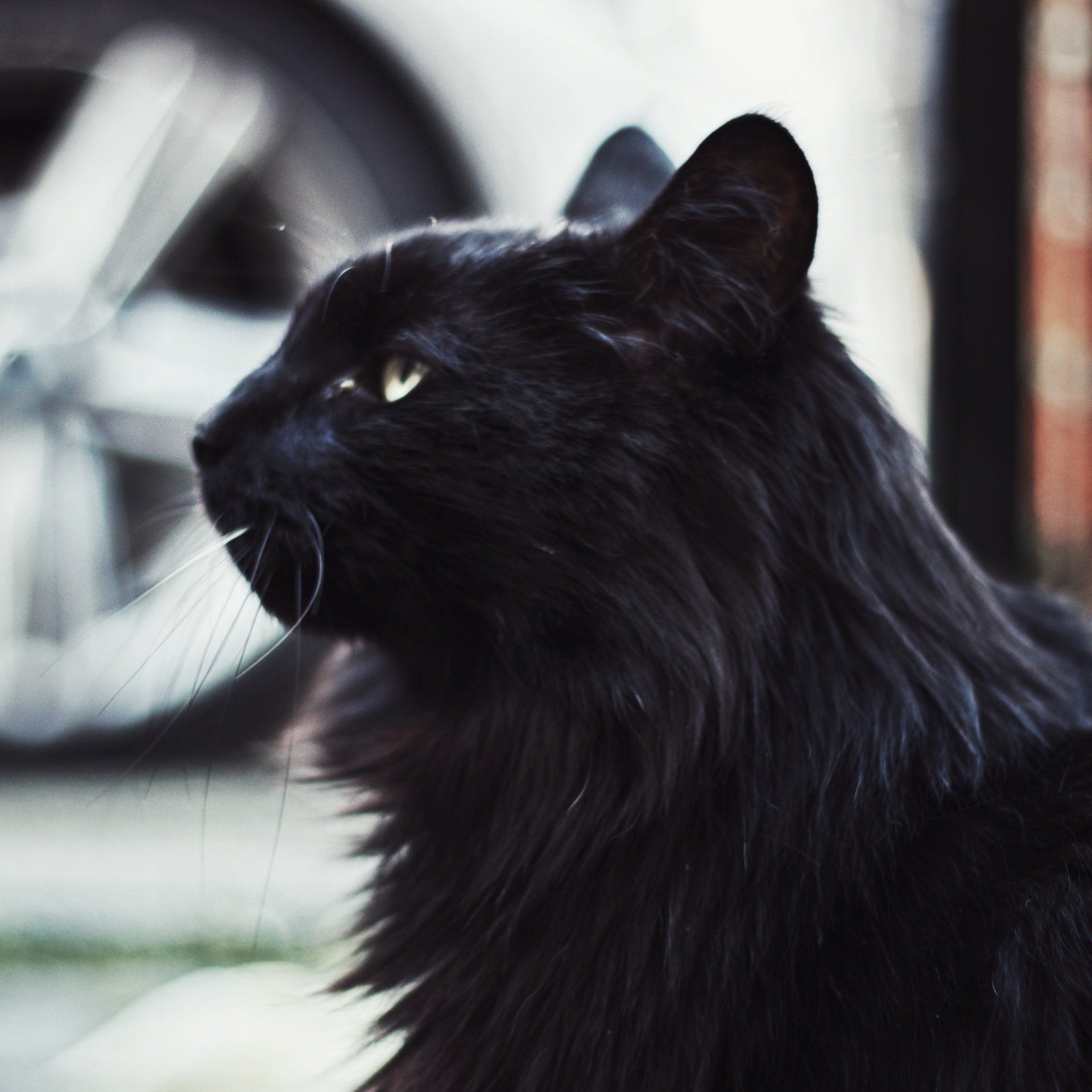Cat-Exclusive Grooming Salon in Newport Pagnell, Buckinghamshire
Blog Layout
Matting in short- and longhaired cats
Emma Fegan • Oct 21, 2020
Plus, a little Month 2 Roundup!

This week marks the start of month 3 of operations here at Feline Good Cat Grooming! 2020 has been…somewhat less than the ideal (!) year to begin a new venture, but I am really pleased with how things are going and hope to continue to provide grooming services to loving catparents and their furbabies for a long time. I’m very grateful to everyone who has supported my business so far – thank you all.
So, in month two Feline Good has seen a fair few matty catties come through the door, with a mix of both long and shorthaired coats. All types of kitties can require assistance with their grooming, not just the fluffy ones, and Feline Good Cat Grooming is here to help!
Shorthaired cats are more frequently able to manage on their own compared with their long-haired counterparts, but many are still prone to developing large “clumps” of matted fur, particularly on their lower backs and at the base of the tail. This becomes more likely as they age and can no longer manage to reach that area themselves, and commonly first presents around 9-10 years old, even if kitty has never had a matt in their lives up till that point. Let alone, that one area of matting at the base of the tail will spread and eventually kitty will have clumps of matted fur all over their back, hips and sides – so best addressed earlier rather than later.
Longhaired cats also tend more towards matting as they reach Senior ages (10 years+ or so) than they have up till then, however they are more likely than shorthaired breeds/moggies to develop matting at younger ages, in some cases even before they reach maturity at 2 years of age. Longhaired cats can matt in almost any area of their body (compared to shorthairs where 9 times out of 10 the matting is on their back/hips) - but commonly in the armpits, sanitary region, hips and belly.
The necessity for (and potential expense of) proper grooming is, in my opinion, something that any prospective cat parent ought to be considering before bringing home their kitty. Breeds such as Persians, Himalayans, Siberian and Norwegian Forest Cats, Maine Coons and some Ragdolls - in particular - can require professional grooming (and/or an extremely
en pointe home grooming routine) from a young age, without which they are very prone to tangles, knots and painful matting.
But, as mentioned above, any cat including your shorthaired moggie might start to matt, particularly as they age.
Matting causes pain due to the roots of the fur being tugged when the cat mobilises that area, and widespread matting or pelting (when matts join together to entirely cover some or all of the cat’s body) can affect or limit the cat’s ability to walk and move naturally. It is commonly observed by purrents that kitty might walk oddly after a matt removal, especially if the matting was extensive and was restricting movement of their joints, as they re-learn how to move without the constant discomfort.
The skin under matts also becomes very dry and flakey (for this reason purrents may also notice dandruff in their cat’s coat after a matt removal, which improves with time as that area of skin is able to breathe again and recovers), and the tugging of the matt as kitty moves can rip small areas of the matt out at the roots leaving bald or patchy areas that become apparent after the matt is clipped out. Left long enough, cats develop painful sores and potentially life-threatening skin infections beneath matted areas.
So, if you start to see your kitty’s fur getting clumpy, don’t delay getting them booked in with your friendly neighbourhood cat groomer!
And to all catparents, I would encourage you to consider getting your new kitten or young adult cat on a good grooming regime now, even if their coat is currently in good condition. It will keep kitty's coat well-conditioned and beautiful and head off potential issues before they can even begin - and keep the amount of shedding in the house down too! Plus, if their coat becomes problematic in the future, kitty will already be comfortable with the grooming process, which makes for a less risky and stressful groom for both cat and groomer.
Have a lovely week, and cuddles to your kitties!
Emma Fegan
Master Cat Groomer & Owner, Feline Good Cat Grooming

By Emma Fegan
•
21 Aug, 2021
This week marks a full 12 months since Feline Good Cat Grooming launched! We are ONE year old! It has been something of a rollercoaster, starting out in summer 2020 turned out to be rather less than ideal, with the pandemic and unpredictable - and often short-notice - lockdowns being factors I had not considered when working on my business launch in early 2020! Thankfully, as of the second lockdown, I had confirmation that pet grooming is considered an Essential Service. Therefore, after receiving Council permission each time, Feline Good has been permitted to remain operational during lockdowns. As well as being a huge relief for a new business owner, I think this is indicative of the crucial nature of the services we provide for the welfare of kitties (and peace-of-mind for their parents). With Feline Good going into its second year of life, as well as continuing to provide grooming services to our loyal regulars and new clients alike, we will be looking to grow and improve. As both the owner and (for now!) sole cat groomer for Feline Good, I have enrolled onto the newly-created OfQual-regulated Cat Grooming Level 3 Diploma. Previous to July 2021, though there have been a number of schools offering excellent training in-house (including the London Cat Grooming School, where I took my first course) there has been no OfQual standardisation and regulation for cat grooming in the UK. I signed up for the Diploma as soon as it was announced, and I anticipate that converting my current training to the new Diploma will add to my knowledge and skills, and keep my methods at the cutting edge of this fast-growing area in the pet care industry. I have also enrolled to take a 5 day advanced practical course in May 2022, to qualify for the Pet Care Trade Association-accredited Certificate in Professional Cat Grooming. I am also looking into bringing on some administrative assistance in the near future. It’s tricky for me to answer calls or emails when working full-time with kitties; they require (and deserve!) my undivided attention during their grooms and response time tends to be impacted by this. So, getting some assistance for calls and emails will improve response times and allow me to focus more on providing the best grooming care that I can, as well as allowing me more time to pursue my continuing education in cat care, psychology and grooming. I will also have a salon assistant starting with me part-time to assist me during grooms. I’m currently reviewing whether this might require a shift in the booking procedure (with new cats, very matted cats and those with tricky temperaments being booked in on certain days of the week), and will update my website as appropriate. Looking longer-term, I hope to bring on another fully trained cat groomer, allowing Feline Good to serve more clients and possibly add in the option for house-call appointments. The future is looking very exciting 😊 Finally, I would of course like to thank everyone who has supported me during my first year. My lovely clients of course, as well as my family, friends and partner who have helped spread the word, pass me shampoo bottles and advise me when things get tricky. Cuddles to all your kitties! Emma Fegan Master Cat Groomer & Owner, Feline Good Cat Grooming

By Emma Fegan
•
07 Apr, 2021
For my first blog of 2021, I wanted to discuss frequency of grooming to keep cats in great, mat-free condition. At the end of every first groom, I chat with the cat's owners about maintenance grooming. As well as remediating existing problems (matting or pelting, as well as sanitary issues and fleas) it’s really important to me to work with my clients to prevent problems from returning. No one wants "grooming groundhog day" where I end up doing extensive de-matting on a kitty over and over again - least of all the kitty, who suffers discomfort and pain when matted. Once matting as happened once (unless it was due to a one-off such as rolling in candle wax), it will reoccur – short of a very dramatic change being implemented in their home grooming regime. A single remedial groom is not a one-stop solution to prevent matting for the rest of the cat’s life, if their coat is to remain mat-free kitty will need regular grooming on-going. Regarding frequency, at the end of the first groom I highly recommend clients get booked in to begin their cat’s preventative (or maintenance) grooming schedule. Having seen a cat just the one time, it is hard to judge the exact frequency that will be required. Therefore, I tend to set the initial interval based upon coat length and condition, and the cat’s temperament (more on this below) and then refine the interval depending upon the condition of the coat at the first preventative appointment. If kitty is still coming in badly matted, the frequency will be amended to be at shorter intervals. Conversely, if kitty is in excellent shape then the client will be given the option to extend to a longer interval. When setting the first interval, I tend to recommend up to 3 months for shorthair cats, and up to 2 months for long- and semi-longhaired cats – as a general rule of thumb. If kitty was in extremely bad grooming condition at their first groom, a 4 weekly maintenance schedule will be recommended at least for the first couple of sessions as this may be needed to get their coat back into an excellent condition. Equally, if the owner is very keen to keep kitty clean, keep shedding to a minimum, or simply wants to focus on enjoying their time at home with their furbaby rather than having to worry about doing much home-grooming, then a monthly schedule will be more appropriate. Interestingly, the colour of the cat’s fur may also be a good indicator of grooming frequency! “Dilute” coloured coats (for example, grey (or “blue”, to use the correct terminology) as the dilute expression of the black coat colour; or cream/strawberry blonde as the dilute expression of ginger (“red”) coat) are much more mat-prone than their non-dilute coloured counterparts! This is due to genetics: the gene that leads to a dilute coat colour is also linked to the texture of the coat, causing it to be more mat-prone. So grey cats, cream cats, strawberry blonde (as opposed to bright ginger) cats etc are likely to require shorter intervals between grooms. The other factor is the cat’s temperament. Cats who are aggressive during their first groom will be recommended a “little and often” schedule – generally once monthly appointments for longhaired cats, and up to 8 weekly for short hairs. The importance of “little and often” for aggressive cats is to ensure: a) They are not badly matted and therefore already in discomfort every single time they come to me (not ever a good start, especially because matted cats become hypersensitised to being touched as they are accustomed to it hurting them and can lash out to try and avoid that pain ☹ ). b) Each appointment can be completed within the cat’s “turkey timer”- IE, their window of tolerance before they become unmanageably aggressive or stressed. This window is typically a couple of hours for most cats, but in the case of some cats can be as short as 30 minutes. c) Kitty becomes used to grooming appointments as a regular, predictable and normal part of their lives. In this way, an initially aggressive cat can have the best chance to learn that grooming is not painful, not an existential threat and no reason to become aggressive. It can take a few sessions, but I have seen dramatic changes in cats’ behaviour (comparing the initial/remedial groom to subsequent maintenance grooms) when a regular and frequent schedule is stuck to. Working with cats and their owners to improve the cat's coat status and welfare is an incredibly rewarding part of what I do, and is very important to me as both a groomer and a cat-lover. If you are experiencing difficulties keeping on top of your kitty's grooming situation at home and want to get the immediate issues resolved, and keep them from reoccurring, do feel free to get in touch :) Cuddles to your kitties! Emma Fegan Master Cat Groomer & Owner, Feline Good Cat Grooming
Training school: www.catgroomingschool.co.uk
Member #56177156 of British Isles Grooming Association: www.biga.org
© 2024
All Rights Reserved | Feline Good



